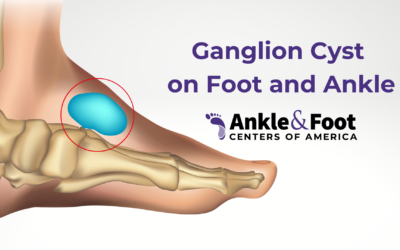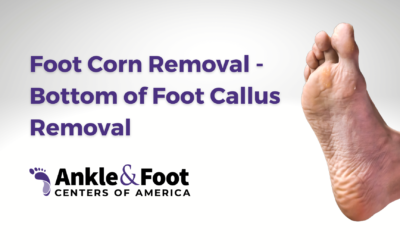Athlete’s foot is a common fungal infection that affects the skin on the feet. It is caused by a fungus that thrives in warm and moist environments, such as shoes and socks. Athlete’s foot can cause uncomfortable symptoms such as itching, burning, and scaling. If left untreated, it can also lead to other complications such as bacterial infections. In this article, we will discuss various ways of how to get rid of athlete’s foot.
Symptoms of Athlete’s Foot
 Athlete’s foot can present itself in various ways, but the most common symptoms of Athlete’s foot include itching, burning, and stinging between the toes or on the soles of the feet. The skin may also appear red, scaly, or flaky, and blisters may develop. In some cases, the infection can spread to the toenails and cause them to become thick and discolored.
Athlete’s foot can present itself in various ways, but the most common symptoms of Athlete’s foot include itching, burning, and stinging between the toes or on the soles of the feet. The skin may also appear red, scaly, or flaky, and blisters may develop. In some cases, the infection can spread to the toenails and cause them to become thick and discolored.
Athlete’s Foot and Tinea Pedis
Athlete’s foot is a type of tinea pedis, which is a fungal infection of the feet. Tinea pedis can also affect the toenails and hands. It is important to accurately diagnose the type of infection in order to receive the most effective treatment from your medical provider.
Causes of Athlete’s Foot
Athlete’s foot is caused by a fungus known as dermatophyte, which thrives in warm and moist environments. It is highly contagious and can be spread through contact with contaminated surfaces such as floors in public places, towels, or shoes. People who frequently wear tight shoes or sweat excessively are more prone to developing athlete’s foot.
Complications
In rare cases, athlete’s foot can lead to more serious complications. These include:
- Bacterial infections: The skin affected by athlete’s foot can become more susceptible to bacterial infections, which may require antibiotics to treat.
- Cellulitis: A bacterial infection that can cause redness, swelling, and pain in the affected area. This can be a serious condition that requires medical attention.
- Spreading to other parts of the body: Athlete’s foot can spread to other areas of the body, including the toenails, hands, and groin.
- Allergic reaction: In rare cases, a person may have an allergic reaction to the fungus. This can cause symptoms such as itching, swelling, and difficulty breathing.
Home Remedies for Athlete’s Foot
There are many home remedies that could be effective in treating athlete’s foot. These include:
- Tea tree oil: This natural antifungal agent can be applied to the affected area several times a day.
- Vinegar: Soaking the feet in a solution of one part vinegar to two parts water can help kill the fungus.
- Baking soda: Sprinkling baking soda inside shoes and socks can help absorb moisture and prevent fungal growth.
- Garlic: Applying crushed garlic to the affected area can help kill the fungus.
- Coconut oil: This natural antifungal agent can be applied to the affected area several times a day.
Although these remedies may be useful, it is always recommend to get a professional opinion from a foot doctor in your area to avoid any further complications.
Athlete’s Foot Treatment
 Here are some common athlete’s foot treatment options:
Here are some common athlete’s foot treatment options:
- Over-the-counter antifungal medications:
- Prescription-strength antifungal medications: In cases where over-the-counter medications are not effective, a doctor may prescribe stronger antifungal medications. These may be applied topically or taken orally and are usually much more effective in treating infections.
- Topical or oral steroids for inflammation: If the affected area is particularly inflamed, a doctor may prescribe topical or oral steroids to reduce swelling and itching. These medications are usually used in conjunction with antifungal treatments.
- Laser therapy: In some cases, laser therapy may be used to treat severe or recurring cases of athlete’s foot. This treatment uses focused laser energy to destroy the fungus without damaging the surrounding tissue.
These medications come in the form of creams, powders, or sprays and are available without a prescription. They work by trying to kill off the fungus that causes athlete’s foot and relieving symptoms. It is important to follow the instructions carefully and use the medication for the recommended amount of time to ensure that the infection is fully treated.
Foot Fungus
Athlete’s foot is just one type of foot fungus. Other types include nail fungus, jock itch, and ringworm. Each type has its own set of symptoms and treatment options. It is important to accurately diagnose the type of fungus in order to receive the most effective treatment.
diagnose the type of fungus in order to receive the most effective treatment.
Overall, treating athlete’s foot as soon as symptoms appear is important to prevent the spread of the infection and alleviate discomfort.
Prevention
Preventing athlete’s foot is key to avoiding this uncomfortable and contagious fungal infection. Here are some tips to help prevent athlete’s foot:
- Keep feet clean and dry: Regularly wash and dry feet, paying special attention to the spaces between the toes.
- Wear clean socks and shoes: Change socks and shoes daily and make sure they are completely dry before wearing them.
- Avoid walking barefoot: Wear flip flops or sandals in public showers, locker rooms, and pool areas to reduce the risk of infection.
- Choose breathable footwear: Opt for shoes made of breathable materials such as leather or canvas to allow air to circulate and prevent moisture buildup.
- Alternate shoes: Avoid wearing the same pair of shoes two days in a row to give them time to dry out completely.
- Use antifungal powder: Applying antifungal powder to the feet and inside shoes can help prevent fungal growth.
Maintaining good foot hygiene is essential to preventing athlete’s foot. This includes regularly washing and drying the feet, as well as keeping nails trimmed and clean. It is also important to wear clean socks and shoes and avoid sharing shoes or towels with others.
Conclusion
Athlete’s foot is a common and uncomfortable fungal infection that can be prevented through good foot hygiene and careful attention to footwear. If symptoms do occur, early treatment with over-the-counter or prescription medications could help alleviate discomfort and prevent the spread of infection. If symptoms persist or worsen despite treatment, it is important to seek medical attention from your local podiatrist.




